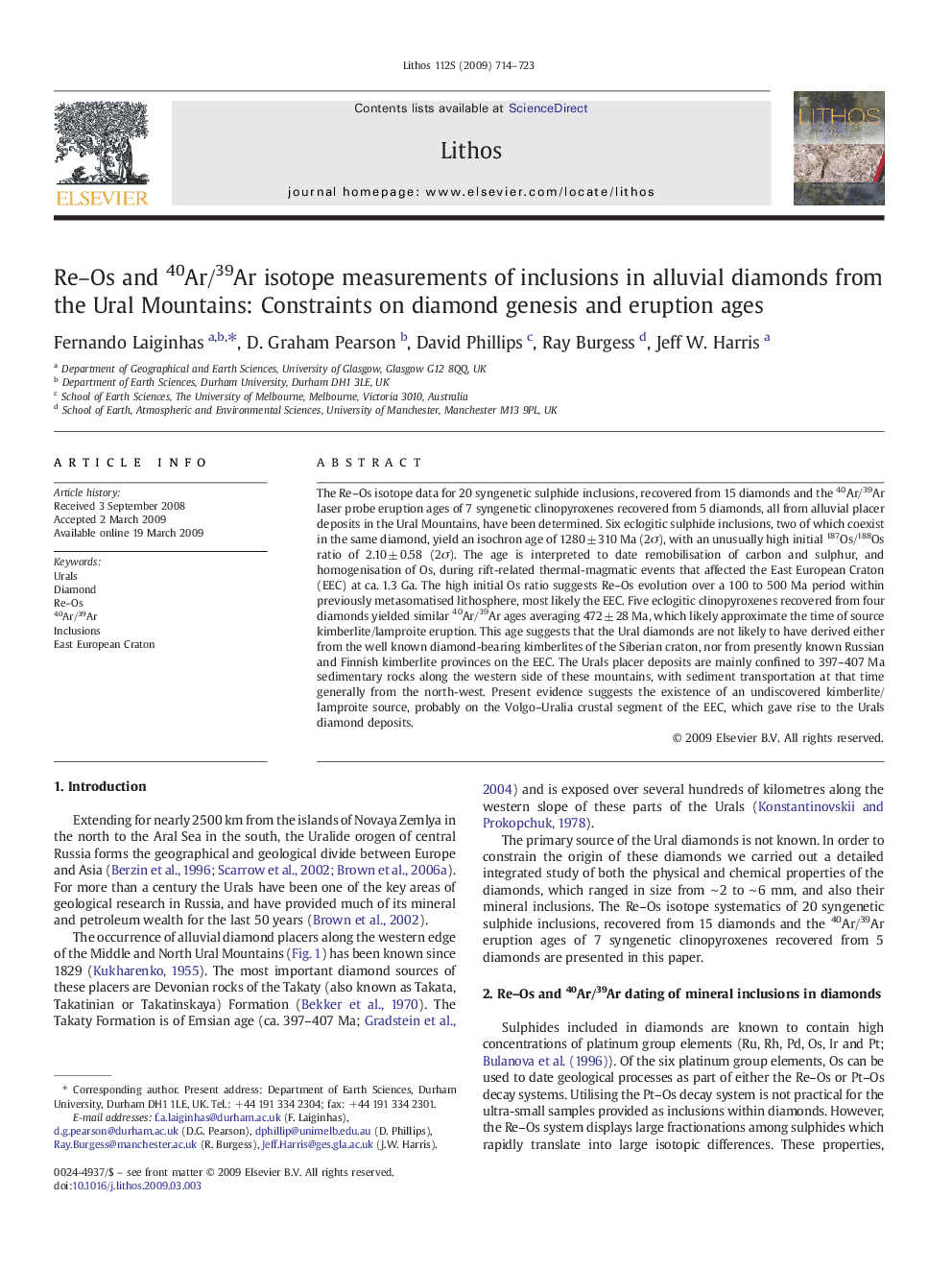| Article ID | Journal | Published Year | Pages | File Type |
|---|---|---|---|---|
| 4717183 | Lithos | 2009 | 10 Pages |
The Re–Os isotope data for 20 syngenetic sulphide inclusions, recovered from 15 diamonds and the 40Ar/39Ar laser probe eruption ages of 7 syngenetic clinopyroxenes recovered from 5 diamonds, all from alluvial placer deposits in the Ural Mountains, have been determined. Six eclogitic sulphide inclusions, two of which coexist in the same diamond, yield an isochron age of 1280 ± 310 Ma (2σ), with an unusually high initial 187Os/188Os ratio of 2.10 ± 0.58 (2σ). The age is interpreted to date remobilisation of carbon and sulphur, and homogenisation of Os, during rift-related thermal-magmatic events that affected the East European Craton (EEC) at ca. 1.3 Ga. The high initial Os ratio suggests Re–Os evolution over a 100 to 500 Ma period within previously metasomatised lithosphere, most likely the EEC. Five eclogitic clinopyroxenes recovered from four diamonds yielded similar 40Ar/39Ar ages averaging 472 ± 28 Ma, which likely approximate the time of source kimberlite/lamproite eruption. This age suggests that the Ural diamonds are not likely to have derived either from the well known diamond-bearing kimberlites of the Siberian craton, nor from presently known Russian and Finnish kimberlite provinces on the EEC. The Urals placer deposits are mainly confined to 397–407 Ma sedimentary rocks along the western side of these mountains, with sediment transportation at that time generally from the north-west. Present evidence suggests the existence of an undiscovered kimberlite/lamproite source, probably on the Volgo–Uralia crustal segment of the EEC, which gave rise to the Urals diamond deposits.
